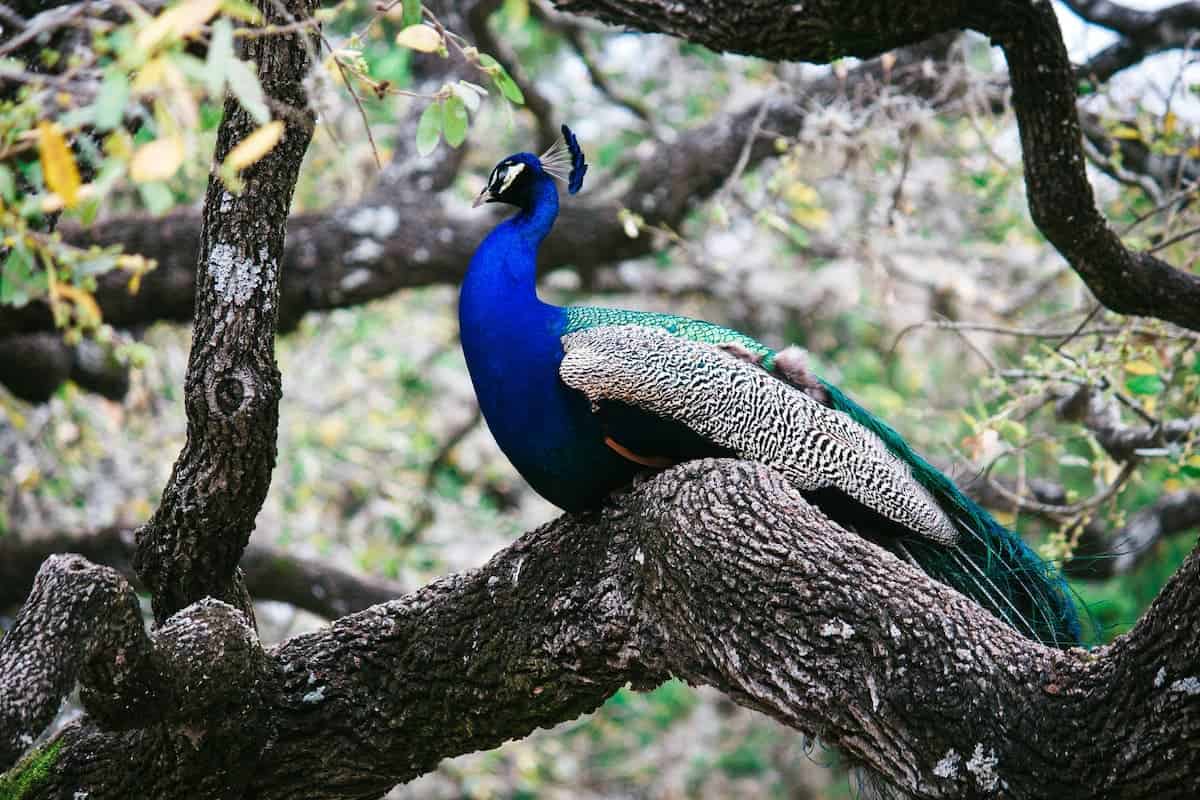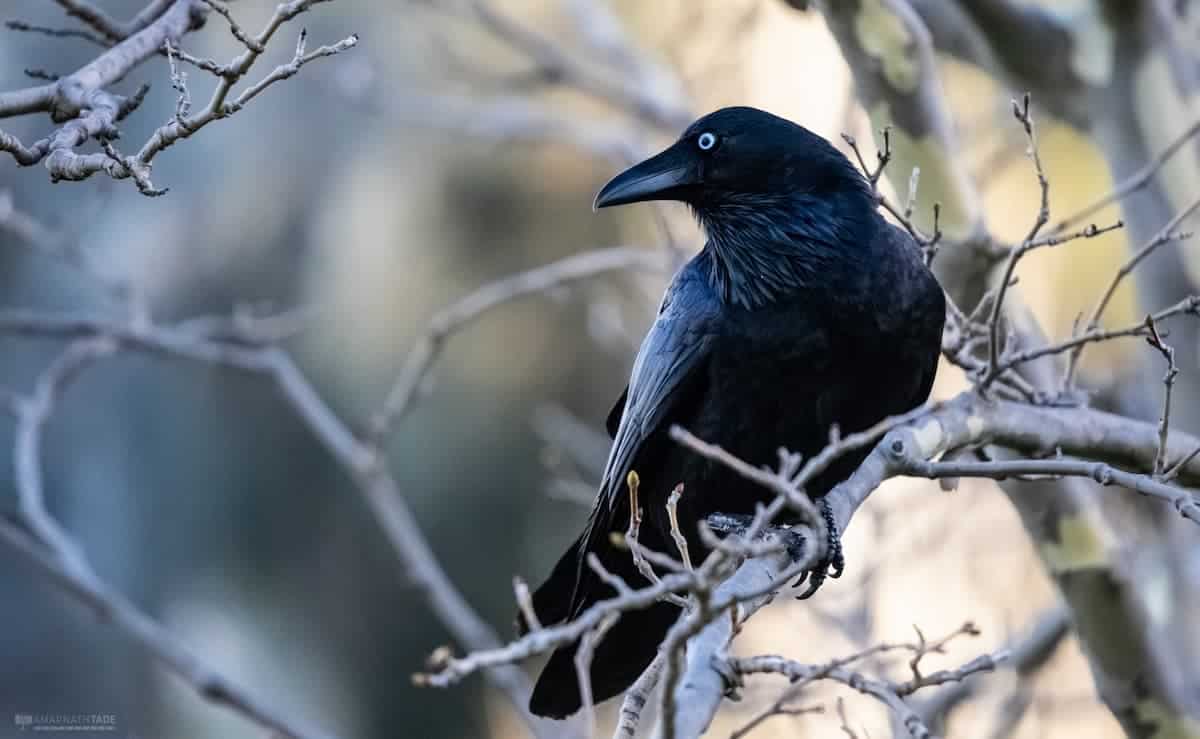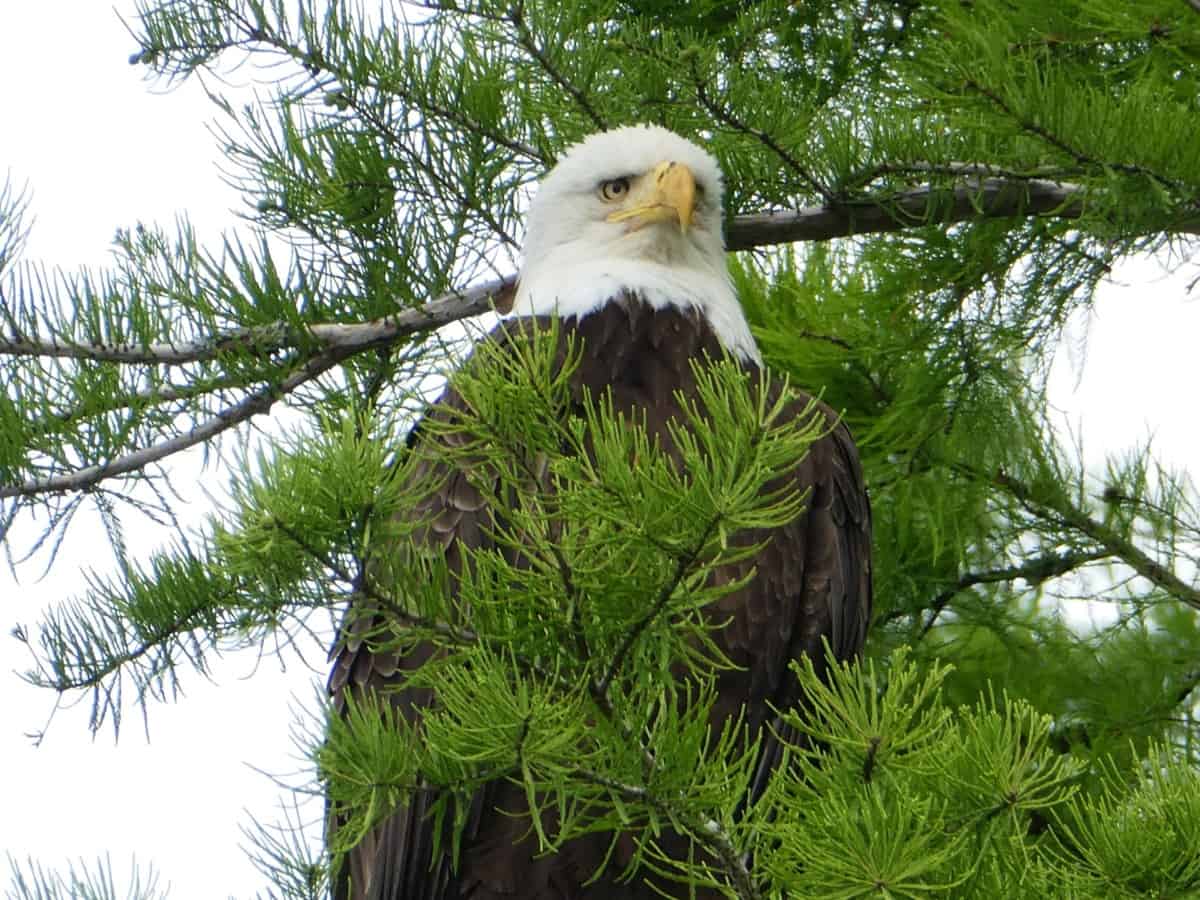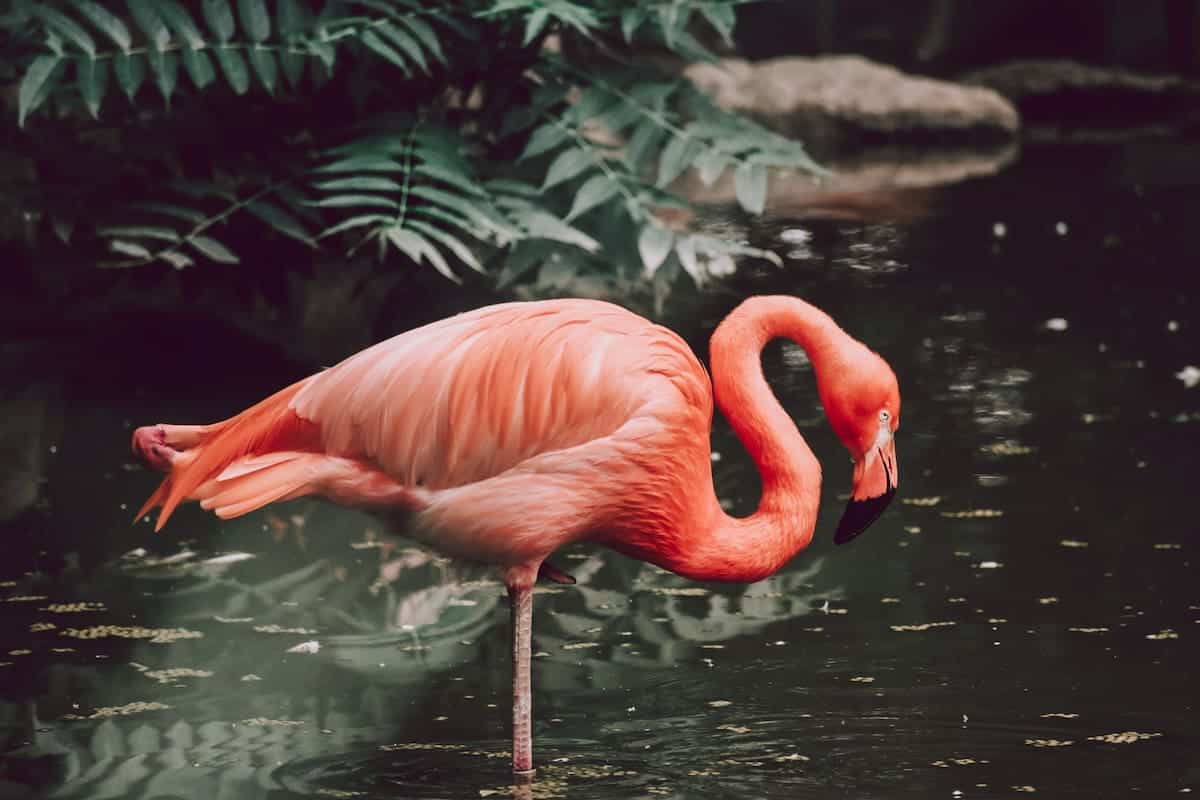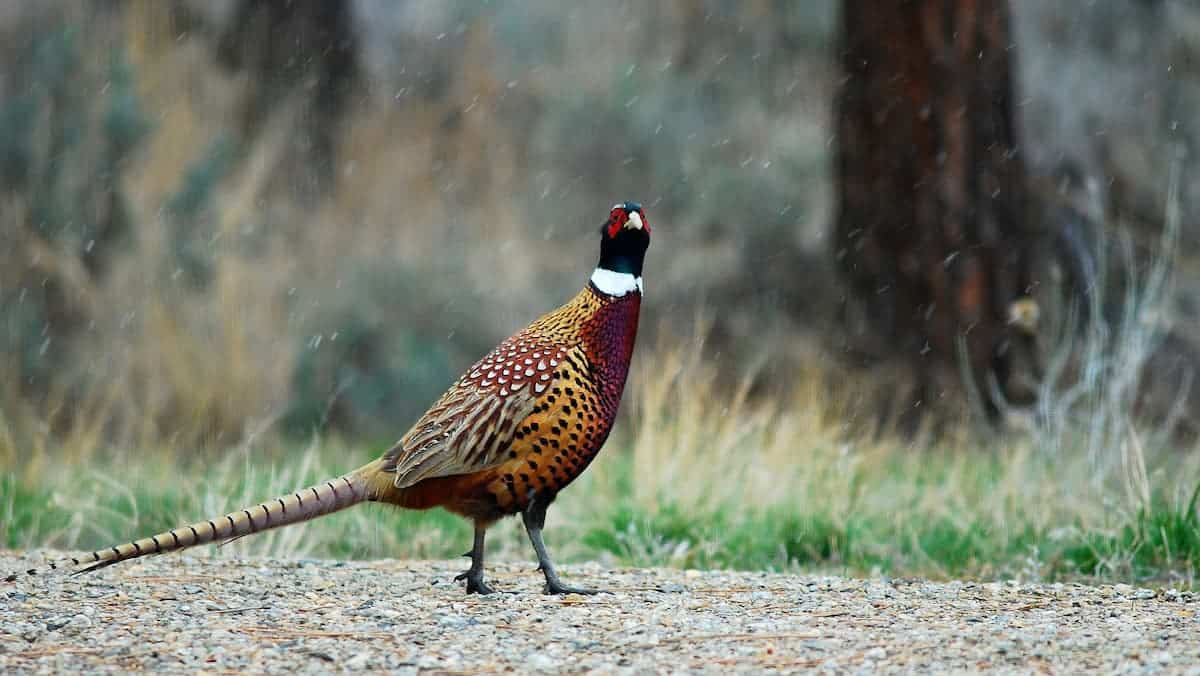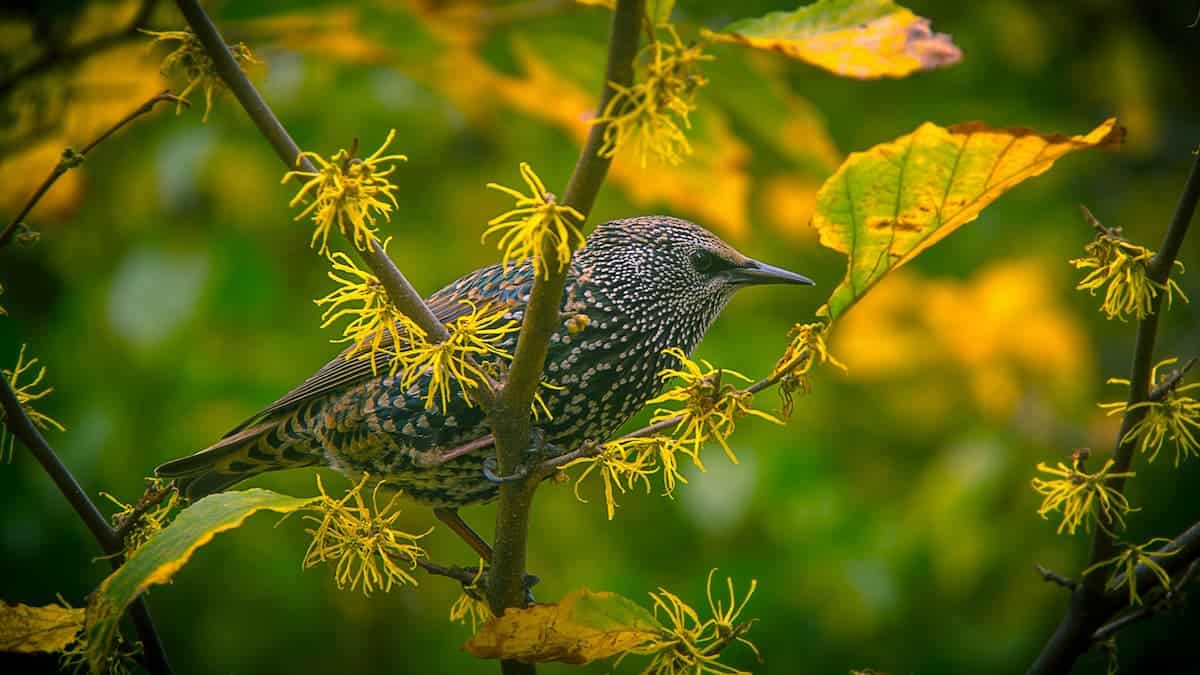Peacocks are members of the pheasant family and are large, colourful birds most known for the enormous, brightly-coloured tall tailfeathers displayed by the males and their loud, piercing cries. The females are known as peahens and collectively they are known as peafowl.
Peacocks and peahens spend most of their time foraging for food on the ground during the day and sleeping during the night. But with predators like foxes to worry about, they must ensure that they find safe places to sleep that keep them hidden and protected from danger.
So where exactly do peacocks go to sleep during the night? Here’s a closer look.
Where do peacocks sleep?
Peacocks and peahens, like most other game birds – pheasants in particular – do not spend their nights sleeping on the ground. As they are large birds, the smaller branches of bushes will not hold their body weight, so peacocks will find more stable perches to sleep on that are safely off ground level and provide some protection against bad weather. In spite of their size, peacocks are good fliers and, whilst they do not fly very far, they are more than capable of getting up to perches off the ground.
Peacocks are also versatile birds. Whilst they will not roam around urban environments often, they are capable of coexisting with humans and will take advantage of man-made structures like sheltered walls and ledges to perch on when it comes time for them to sleep.
Do peacocks sleep in trees?
Peacocks do sleep in trees. Peacocks and peahens will sleep from dusk to dawn in trees, as they provide sturdy perches away from ground level, making them safe places to roost away from predators.
Trees also provide protection from bad weather due to the cover offered by dense leaves. This makes trees with sturdy branches the ideal places for peacocks and peahens to sleep in.
Where do peacocks sleep in captivity?
Peacocks and peahens in captivity will happily sleep in man-made shelters located on the ground as they will have nothing to fear from predators. A shelter with a roof and entrance large enough for them to enter is more than they need to get a comfortable night’s sleep. This will also provide them with a warm location to sleep during the winter.
Where do peacocks sleep in winter?
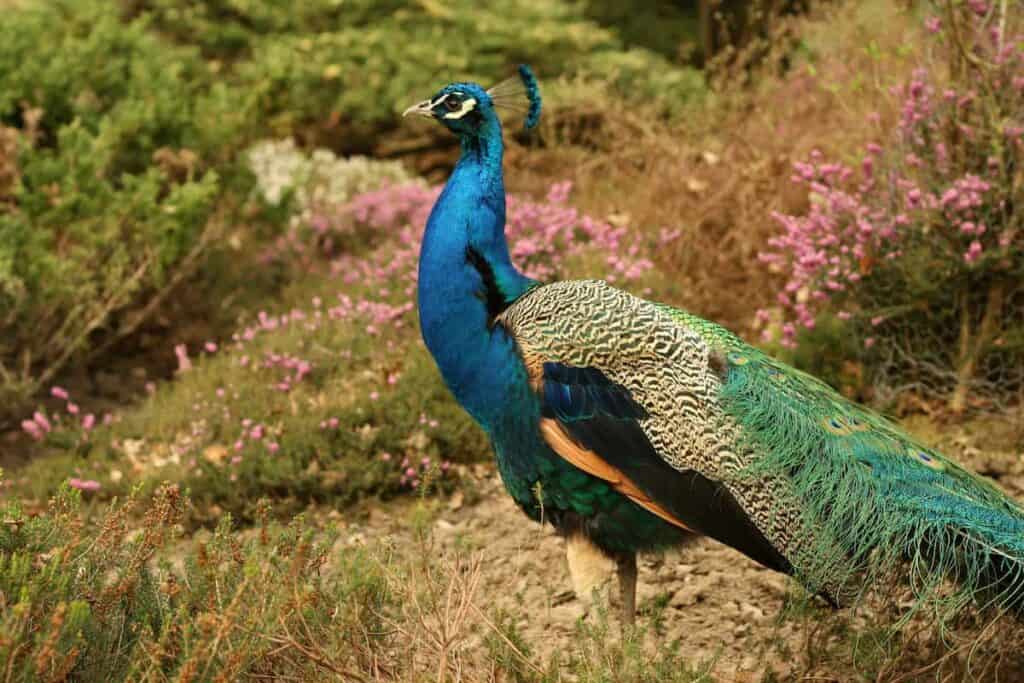
Peacocks are native to India and therefore prefer warmer climates. However, as they have spread around the world and frequently live in areas where the temperatures can drop to freezing or below, they need to find extra shelter in order to comfortably sleep during the winter.
They will look for the sturdiest trees to sleep in, with the densest covering of leaves in order to find enough protection from the cold wind and rain. Peacocks living closer to humans may also look for disused buildings and lofts to sleep in during the winter as they provide the perfect cover from the bad weather.
Do peacocks sleep in nests?
Peacocks do not sleep in nests. That is because peacocks are males and it is the female peahens that construct nests and incubate their eggs. Peahens will scrape out a shallow hole underneath the cover of a dense bush or shrub in order to build her nest and will sleep on the nest whilst incubating her eggs. Once the eggs hatch, she will not sleep in the nest, leaving it for the young until they grow large enough to abandon the nest entirely.
Peahens will also build nests on roofs and in larger trees if there are lots of predators in the area, though they will most often build at ground level due to their size.
Conclusion
Peacocks and peahens, like pheasants, are large birds that spend most of their time on the ground, but will fly up to perches away from ground level when it is time for them to sleep. They will roost in trees with dense leaf coverage and man-made locations like fences, walls, barns and more in order to find sufficient shelter from the weather and predators while they sleep.
Peacocks do not sleep in nests, but the female peahens will whilst incubating their eggs. During the winter, peacocks and peahens will do their best to find shelter away from the wind and rain so that they can sleep more comfortably as they prefer warmer temperatures.
